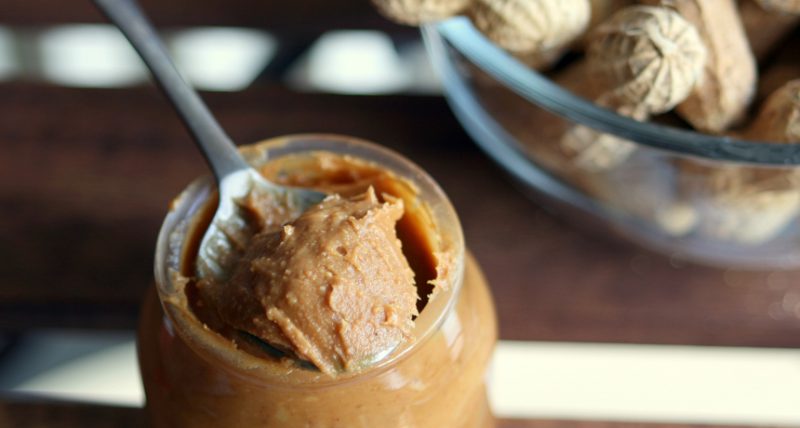Peanuts for baby: A way to avoid peanut allergy?
Shunning peanuts may heighten the risk of a life-threatening peanut allergy

For people with a peanut allergy, just being near people who eat peanuts and products made from them can trigger a serious allergy.
Scott Bauer/USDA-ARS
By Nathan Seppa
HOUSTON, Texas — Infants eating small but regular doses of peanut butter are less likely to develop an allergy to peanuts than are babies eating no peanuts. That’s the surprising finding of a new study.
Many people, starting in childhood, develop a serious allergy to peanuts. Eventually, even the briefest exposure — such as a kiss from someone who recently ate peanuts — may cause a serious reaction. A rash may break out over the body. The eyes or airways may close. People can die.
Because peanut allergies often run in families, doctors may advise the parents or child of someone with peanut allergy to keep all peanut products away from kids, from birth onward.
The new study now challenges that tactic.

Each baby underwent a skin test where a doctor pricked the skin, injecting a trace of peanut. Then the doctors scanned for signs of some immune reaction, such as a rash at the prick site. For allergic children or those who reacted strongly to the peanut exposure, the trial ended here. Another 530 babies showed no reaction. Lack’s team then randomly assigned each of them to get small doses of peanut butter at least three times a week — or to totally avoid peanuts.
The doctors followed these children for the next four or so years. And by age 5, the rate of peanut allergy was just under 2 percent for kids who regularly had eaten some peanut butter. Among kids who ate no peanuts over this period, the allergy rate was seven times higher — nearly 14 percent!
Another 98 babies initially had reacted somewhat to the skin-prick test. These kids, too, were assigned to get peanut butter — or stay peanut-free — through age 5. And a similar trend showed up here. Among kids who had eaten peanuts, the rate of allergy was 10.6 percent. It was three times that high among children who had avoided peanuts: 35.3 percent.
These data swing the balance of evidence in favor of early consumption of peanuts as a way to cut rates of this serious food allergy.
Lack presented his group’s findings here on February 23 at the American Academy of Allergy, Asthma & Immunology annual meeting. A more detailed report of his team’s findings appeared online, the same day, in the New England Journal of Medicine.
Allergy prevention policies may change
In 2000, the American Academy of Pediatrics, or AAP, released guidelines to parents. It recommended keeping peanuts from babies who showed any risk of allergy. But in 2008 AAP changed its mind. It took back those guidelines, since no clear evidence supported avoiding peanuts — except when an infant was clearly allergic.
Since then, doctors have been unsure what to tell parents, notes Robert Wood. He directs pediatric allergy and immunology research at Johns Hopkins University in Baltimore.
Meanwhile, rates of peanut allergy have been rising. Rebecca Gruchalla works at the University of Texas Southwestern Medical Center in Dallas. Her colleague Hugh Sampson works at the Icahn School of Medicine at Mount Sinai in New York City. Together they wrote an editorial in the February 23 New England Journal of Medicine. “In the United States alone,” they note, peanut allergy “has more than quadrupled in the past 13 years.” The rate in 1997 was just 0.4 percent. By 2010, it had mushroomed to more than 2 percent.
And the reason may lie in what a baby eats, says allergist George Du Toit. He coauthored the new study. Like Lack, he works at King’s College, London.
Doctors recommend giving infants nothing but breast milk for a baby’s first six months. Yet most moms in Europe and North America wean their babies onto solid foods long before that. “We now need to embed peanuts within that [early weaning diet],” Du Toit says.
And here’s what started him thinking that way. In 2008, he and Lack found that peanut-allergy rates among Jewish children in the United Kingdom were 10 times as high as in Israel. What made the British kids different? They started consuming peanuts later than Israeli kids (SN: 12/6/08, p. 8), his team found. This suggested that the age at which kids first eat peanuts matters — and prompted the new study.
Its data now offer strong evidence for the idea that early exposure to peanuts can save children from a life-threatening allergy, says Wood from Johns Hopkins: “This is the first real data to support that emerging theory.” And its results, he adds, “are dramatic.” As such, he argues, the time “is really right” for changes in recommendations for doctors and parents.
Gruchalla and Sampson agree that new guidelines are needed. The reason, they argue, is that “the results of this [new] trial are so compelling, and the problem of the increasing prevalence of peanut allergy so alarming.” At-risk kids should be tested for peanut allergy at 4 to 8 months old. Where no allergy appears, these kids should be given 2 grams of peanut protein “three times a week for at least 3 years,” they say.
But they also point out that important questions remain. Among them: Should all babies get peanuts before they are a year old? Do infants need to ingest a tiny amount — roughly eight peanuts’ worth — three times a week for a full 5 years? And if regular peanut consumption ends, will the risk of allergy grow? Clearly, these researchers argue, more studies “are urgently needed” to answer such questions.
In fact, notes immunologist Dale Umetsu, in medicine “we’re moving toward a one-size-doesn’t-fit-all way of thinking.” Umetsu works at Genentech, a drug company based in South San Francisco, Calif. Regarding kids, he says, “some might benefit from early introduction and others may not.” He, too, calls for early skin-prick tests.
But what the new study makes clear, Gruchalla and Sampson conclude, is that “we can do something now to reverse the increasing prevalence of peanut allergy.”
Power Words
(for more about Power Words, click here)
allergen A substance that causes an allergic reaction.
allergy The inappropriate reaction by the body’s immune system to a normally harmless substance. Untreated, a particularly severe reaction can lead to death.
eczema An allergic disease that causes an itchy red rash — or inflammation — on the skin. The term comes from a Greek word, which means to bubble up or boil over.
immune system The collection of cells and their responses that help the body fight off infections and deal with foreign substances that may provoke allergies.
immunology The field of biomedicine that deals with the immune system.
peanut Not a true nut (which grow on trees), these protein-rich seeds are actually legumes. They’re in the pea and bean family of plants and grow in pods underground.
pediatrics Relating to children and especially child health.
proteins Compounds made from one or more long chains of amino acids. Proteins are an essential part of all living organisms. They form the basis of living cells, muscle and tissues; they also do the work inside of cells. The hemoglobin in blood and the antibodies that attempt to fight infections are among the better known, stand-alone proteins.Medicines frequently work by latching onto proteins.







